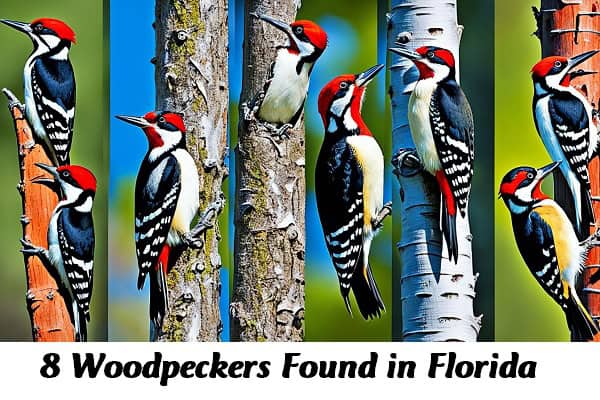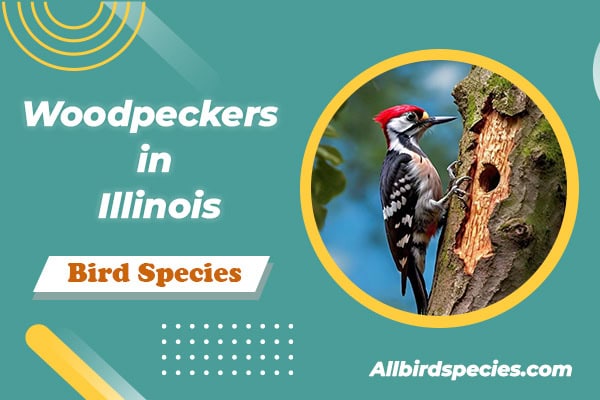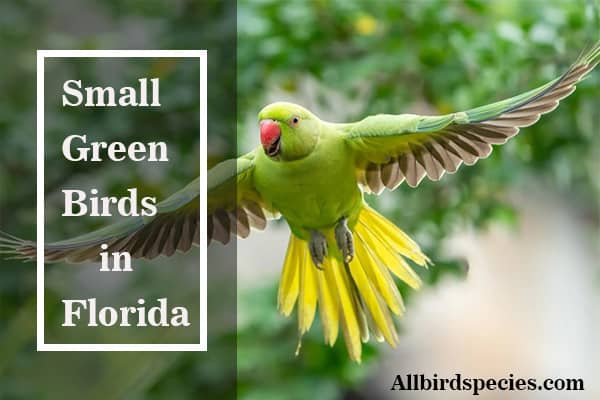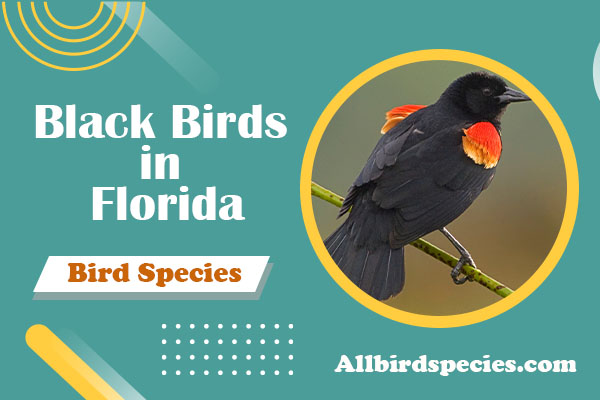Woodpeckers in Florida (8 Species With Pictures)
Are you curious about the woodpeckers in Florida? From the striking Pileated Woodpecker to the elusive Red-Cockaded Woodpecker, Florida is home to many. Join us as we explore 8 common woodpecker species in Florida. We’ll look at their unique features, where they live, how they behave, and their conservation status.
If you love birdwatching or just want to learn more about Florida’s wildlife, this guide is for you. Let’s dive into the world of Florida’s woodpeckers. We’ll share fascinating stories about these birds that live in the Sunshine State.
Florida’s Diverse Woodpecker Species
Florida is a paradise for bird lovers, with many woodpecker species living here. You can find everything from the big Pileated Woodpecker to the rare Red-Cockaded Woodpecker. These birds have made their homes in different parts of the state.
Fascinating Woodpeckers Found in the Sunshine State
Florida has eight woodpecker species, and some say there might be up to ten. These birds come in all sizes, colors, and behaviors. They are fun to watch and learn about.
- Red-Bellied Woodpecker is easy to spot with its black-and-white look and bright red neck.
- Tiny Downy Woodpecker visits feeders often, measuring only 6.75 inches long.
- The pileated Woodpecker is the biggest woodpecker in North America, known for its big red head and strong beak.
From the Striking Pileated to the Elusive Red-Cockaded
Each woodpecker in Florida has its own story. From the Red-Headed Woodpecker to the hidden Red-Cockaded Woodpecker. They live in different places, like pine forests and green hammocks. This shows how diverse Florida’s birds are.
“Woodpeckers are a true symbol of Florida’s vibrant and ever-changing natural world, reminding us of the importance of preserving and protecting the habitats that sustain these remarkable creatures.”
Let’s learn more about Florida’s woodpeckers. We’ll discover their habits, where they live, and why we should protect them. This will help us appreciate their role in Florida’s nature.
Identifying Woodpeckers by Size
Size is key when identifying woodpeckers in Florida. These birds come in three sizes: large, medium, and small. Knowing their sizes helps birders and nature lovers tell them apart.
Large, Medium, and Small Woodpecker Size Groups
The Pileated Woodpecker is Florida’s largest, reaching up to 17.5 inches long and over 12 ounces heavy. It’s a big bird with black and white feathers and a strong beak. On the other end, the Downy Woodpecker is the smallest, only 6.1 inches long and 0.8 ounces heavy.
Between these extremes, Florida has medium-sized woodpeckers like the Red-bellied Woodpecker, Hairy Woodpecker, Red-headed Woodpecker, and Yellow-bellied Sapsucker. They are 7 to 10 inches long and weigh 1.5 to 3 ounces. This makes them easy to tell apart from the bigger and smaller birds.
| Woodpecker Size | Examples | Length | Weight |
|---|---|---|---|
| Large | Pileated Woodpecker | up to 17.5 inches | over 12 ounces |
| Medium | Red-bellied Woodpecker, Hairy Woodpecker, Red-headed Woodpecker, Yellow-bellied Sapsucker | 7 to 10 inches | 1.5 to 3 ounces |
| Small | Downy Woodpecker | 6.1 inches | 0.8 ounces |
This chart and image help you quickly identify Florida’s woodpeckers by size. Knowing these sizes will make you better at watching these birds in the Sunshine State.
The Nest Cavities of Woodpeckers
Woodpeckers in Florida are known for making their nests in dead or decaying trees. This hard work can take weeks, with both the male and female pecking away. The size and shape of the nest hole can tell you which woodpecker made it.
Excavating Nesting Cavities in Dead Wood
Woodpeckers use their strong beaks to make their nests in trees that are already dying. This saves them energy and makes the job easier. The nests are safe spots for their eggs and babies, keeping them safe from predators and the weather.
Cavity Entrance Hole Size and Shape by Species
- The red-cockaded woodpecker (RCW) can reach lengths of 9 inches and a weight of 1.8 ounces. RCWs make their nests in live pine trees from April to June.
- The red-headed woodpecker, with its bright feathers, picks dead trees for its nests. It likes open places like parks and orchards.
- The pileated woodpecker, Florida’s biggest, makes big, rectangular holes in dead trees for its nests.
Knowing the different sizes and shapes of woodpecker nest holes helps us learn about these birds. It tells us about their nesting habits and what they like.
Woodpecker nests are crucial for their survival. They provide safe homes for their young and help Florida’s forests stay healthy.
Woodpeckers in Florida (8 Species With Pictures)
Florida is home to many woodpecker species, each with unique features and behaviors. From the bright red-headed woodpecker to the majestic pileated woodpecker, these birds play a big role in Florida’s nature.
Let’s look at the 8 woodpecker species in Florida, with pictures to help identify them:
- Red-Headed Woodpecker: This woodpecker stands out with its bright red head. Sadly, its numbers have dropped by over 70% in 50 years. It’s medium-sized, found in open woods and suburbs, measuring 7.5-9.1 inches long with a 16.5-inch wingspan.
- Red-Bellied Woodpecker: A common feeder bird in Florida, the red-bellied woodpecker is easy to spot with its black-and-white look and red nape. It’s 9.4 inches long with a wingspan of 13.0-16.5 inches.
- Downy Woodpecker: One of Florida’s most common woodpeckers, the downy is small, measuring 5.5-6.7 inches long with a 9.8-11.8-inch wingspan. Its black and white feathers and ability to live in different places make it well-known.
- Hairy Woodpecker: Bigger than the downy, the hairy woodpecker is 7.1-10.2 inches long with a 13.0-16.1-inch wingspan. It lives in mature forests, suburbs, and city parks across the state.
- Red-Cockaded Woodpecker: Found only in the longleaf pine forests of the southeastern U.S., including parts of Florida, this endangered bird is 7.9-9.1 inches long with a 14.2-inch wingspan. It’s known for its group living and special nesting ways.
- Yellow-Bellied Sapsucker: This bird migrates to Florida for the winter, eating tree sap for its energy. It’s 7.1-8.7 inches long with a 13.4-15.8-inch wingspan.
- Northern Flicker: Known for its bright colors and unique way of finding food, the northern flicker is common in Florida. It’s 11.0-12.2 inches long with a 16.5-20.1-inch wingspan.
- Pileated Woodpecker: The biggest woodpecker in North America, the pileated is famous for its red crest and love for old forests. It’s 15.8-19.3 inches long with a 26.0-29.5-inch wingspan.
If you love birdwatching or just enjoy Florida’s nature, these 8 woodpecker species will amaze you. Keep an eye out and be ready to snap photos of these amazing birds in the Sunshine State.
Foraging Habits and Diet
Florida’s woodpeckers can be split into three main groups based on how they forage and what they eat. The “typical” woodpeckers, like the Red-Bellied and Downy, dig out insects and larvae from tree bark and wood. They use their strong bills to get into the bark and find insects and ants.
Flickers, on the other hand, are ground-foragers that look for ants and ant larvae. They use their long, barbed tongues to pull their food out of the ground and logs. The Yellow-Bellied Sapsucker eats tree sap and also eats insects and berries. It taps into the tree to get a steady food supply all year.
Typical Woodpeckers, Flickers, and Sapsuckers
- Typical Woodpeckers: They dig out insects and larvae from tree bark and wood, using their strong bills.
- Flickers: They are ground-foragers that look for ants and ant larvae with their long, barbed tongues.
- Sapsuckers: They eat the sap of trees and also eat insects and berries.
These different foraging ways help Florida’s woodpeckers live well in many places, from forests to scrublands. They use various food sources to avoid competition and make the most of Florida’s natural resources.
Abundance and Rarity of Florida Woodpeckers
Florida is home to many woodpecker species, each with its own story. Some, like the Red-Bellied Woodpecker, are easy to spot. Others, like the Red-Headed Woodpecker, are much rarer and need our help.
The Downy Woodpecker is the most common in Florida, with 390,766 sightings. The Yellow-Bellied Sapsucker is also common, with 74,603 sightings. But the Hairy Woodpecker is much rarer, with only 4,852 sightings.
The Red-Cockaded Woodpecker is endangered and lives in a few pine forests in Florida. It needs special protection because it’s hard to find and its home is being destroyed.
Knowing how many woodpeckers live in Florida helps us protect them. We can help the rare ones by saving their homes. This way, Florida can keep its beautiful woodpeckers.
“Woodpeckers are not only fascinating to observe, but they also play a vital role in the health of our forests. Protecting their populations is essential for maintaining the ecological balance of Florida’s ecosystems.”
Red-Headed Woodpecker
Identification, Habitat, and Behavior
The red-headed woodpecker is a standout in Florida’s bird world. It has a bright red head, white belly, and black back and wings. This bird’s large bill helps it dig nests and find food.
These woodpeckers live in open forests, pine lands, and farms with clear ground. They catch insects in the air and eat from the ground and trees. They also store food in trees to eat during the winter.

Conservation Status and Where to Spot Them
The red-headed woodpecker was once common in the eastern U.S. But now, it’s getting rarer because of lost homes and other dangers. It’s now seen as near-threatened, and people are working to save it.
Even though they’re not as common, you can still see them in Florida. Look for them in well-kept pine lands, open forests, and farms. Great places to see them include the Apalachicola National Forest, Withlacoochee State Forest, and the St. Marks National Wildlife Refuge.
“The Red-Headed Woodpecker was the ‘spark bird’ for legendary ornithologist Alexander Wilson in the 1700s.”
If you love birdwatching or just enjoy nature, keep an eye out for the red-headed woodpecker in Florida. Their bright look and interesting ways will surely amaze you.
Red-Bellied Woodpecker
The red-bellied woodpecker is a common bird in Florida, known for its black and white back, red nape, and bold face. It’s a cavity-nesting bird, which means it helps other birds and wildlife by making homes in trees.
Bold Markings and Cavity-Nesting Habits
This bird is medium-sized and has a striking look with a barred back and a red cap. The male’s red belly is hard to see because of its feathers. Young woodpeckers look grayer and don’t have the bright red head.
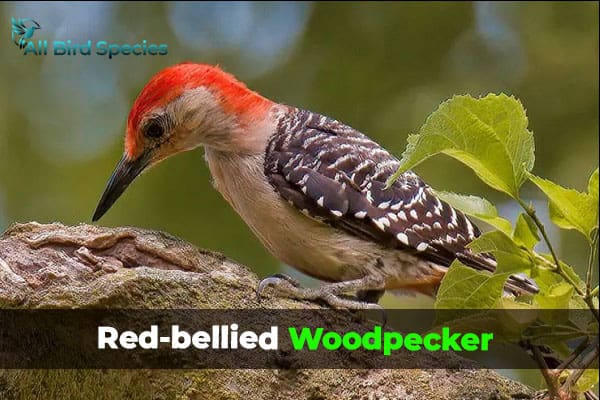
Red-bellied woodpeckers make their nests in dead wood of big trees. This helps other birds and animals by giving them homes too.
Diet, Population, and Ideal Locations
These woodpeckers eat insects, nuts, seeds, and small fruits. They use their beaks to break open large nuts. They live in many Eastern woodlands, in old and young trees alike.
Their numbers seem to be steady or growing. In recent years, they’ve moved north and their population has increased. Scientists have studied 140 million bird sightings and used climate models to predict their future.
Red-bellied woodpeckers live in eastern forests all year. They fly in a special way and often look for food on tree surfaces. Adult males often visit backyard feeders, like suet feeders, so people can see them up close.
Pileated Woodpecker Grandeur
The Pileated Woodpecker is the biggest and most stunning woodpecker in Florida. It has black and white feathers, a big size, and a strong beak. People call it the “king of the forest” because of its grand look.
It’s about 17 inches long. The Pileated Woodpecker has a special crest and wing patterns. These make it look even more regal.
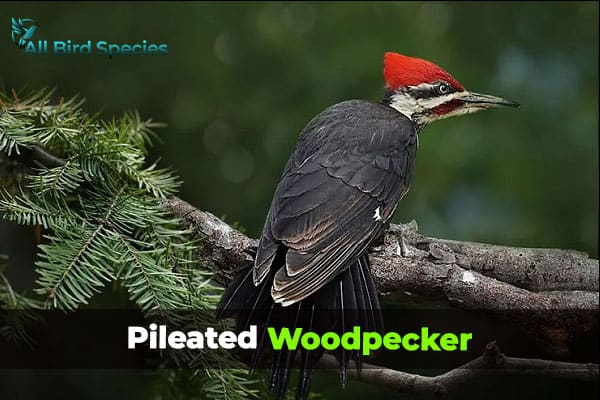
The King of the Forest: Size and Appearance
The Pileated Woodpecker is the biggest in Florida. It’s a natural wonder with a wingspan of up to 30 inches. This lets it hunt bigger prey and make deep holes in trees.
It has a red crest and black-and-white feathers. These make it easy to spot from afar. Its strong beak shows its power and how it can drill into wood.
Life Cycle, Habitats, and Conservation
Pileated Woodpeckers make new homes every year in old, dead trees. They help their ecosystems by making homes for other birds and keeping forests healthy. But, they face threats like losing their homes and forests being broken up.
Conservation efforts are working to save their homes. They help make sure these amazing birds can still live in Florida’s varied landscapes.

